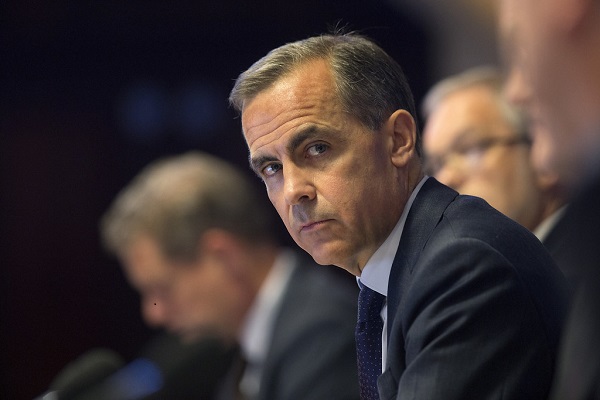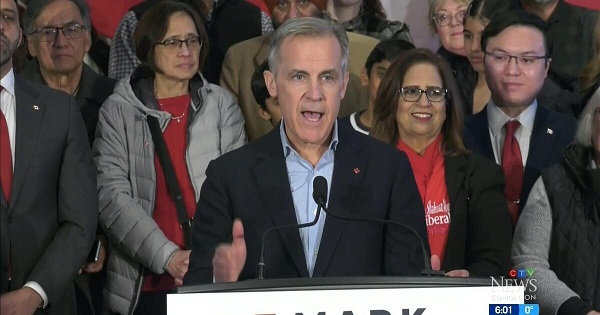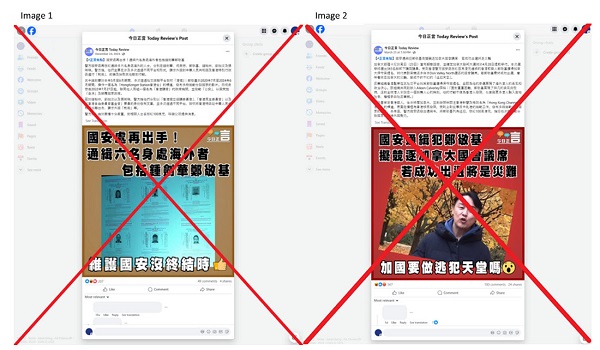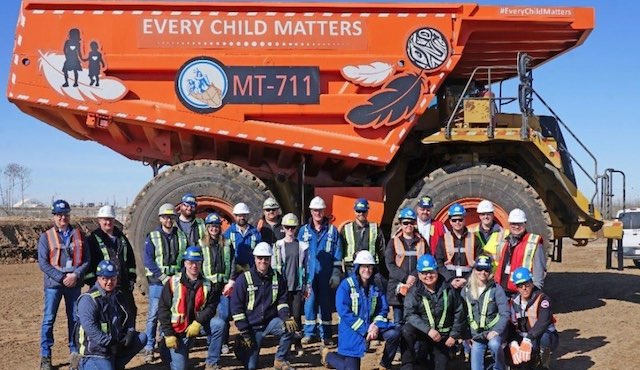Frontier Centre for Public Policy
UNDRIP’s false promise of Indigenous Nationhood threatens individual Indigenous Canadians
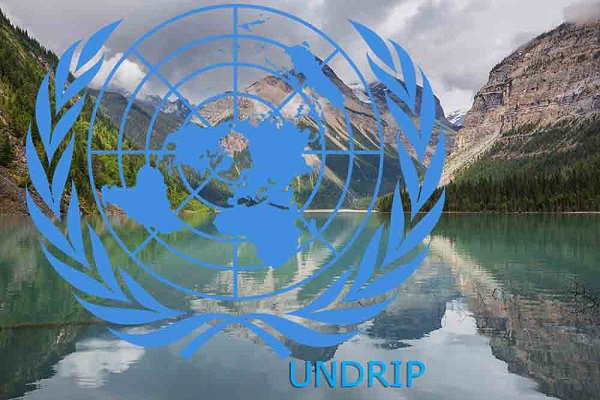
From the Frontier Centre for Public Policy
By Peter Best
All societies need to make use of force, both to preserve internal order and to protect themselves from external enemies. A liberal society does this by creating a powerful state, but then constraining that power under a rule of law. The state’s power is based on a social contract between autonomous individuals who agree to give up their rights to do as they please in return for the state’s protection. It is legitimated both by the common acceptance of the law, and, if it is a liberal democracy, through popular elections. Liberal rights are meaningless if they cannot be enforced by a state, which, by Max Weber’s famous definition, is a legitimate monopoly of force over a defined territory…Ultimate power, in other words, continues to be the province of national states, which means that control of this power at this level remains critical.
-Francis Fukuyama – Liberalism and its Discontents
Our Canadian elites, led by Justin Trudeau’s Liberal government, continue to advance the idea that Canada should be a race-based nation. This is reflected in the Trudeau government’s enactment of the racist United Nations Declaration on the Rights of Indigenous People (UNDRIP) laws and policies. (The UNDRIP Action Plan.)
These laws and policies are partly based on the premise that Indigenous peoples in Canada still have distinct cultures that give them the right to exist as separate groups within the Canadian nation, living parallel to the rest of Canadians, and only optionally being subject to the laws of Canada.
Under the heading “Cultural, religious and linguistic rights,” the UNDRIP Action Plan sets out the Trudeau government’s goal of creating a country where:
Indigenous peoples fully enjoy and exercise their distinct rights to maintain, control, develop, protect, and transmit their cultural heritage, indigenous knowledge, languages, food systems, sciences, and technologies, without discrimination…. Indigenous peoples are thriving, including through connection to culture and community, the use of their languages and the expression of their spiritual heritage.
Also, the UNDRIP Action Plan prescribes that these “distinct rights” are to be exercised and enhanced by treating “Indigenous peoples” as independent, self governing, “nations,” representing over 630 race-based nations existing within the boundaries of Canada.
The premise underlying the UNDRIP Action Plan is that authentic, pre-contact Indigenous cultures still exist, and that they have the right to be preserved at the expense of Canadian taxpayers. In other words, these nations will be dependent on other Canadians.
The last vestiges of authentic, distinct, pre-contact Indigenous cultures disappeared about 150 years ago. As Assembly of First Nations co-founder William Wuttunee wrote in 1971 in his book Ruffled Feathers: “Real Indian culture is just about dead on the reserves.” Now, over 50 years later, native traditional cultures have been replaced by re-imagined cultures, even if a declining few Indigenous people still speak their traditional languages.
There can be no going back to any part of Indigenous pre-contact cultures, nor would Indigenous peoples want to. In this respect, Iroquois writer Sachem Ely S. Parker says:
Do you know or can you believe that sometimes the idea obtrudes…whether it has been well that I have sought civilization with its bothersome concomitants and whether it would not be better even now…to return to the darkness and most sacred wilds (if any such can be found) of our country and there to vegetate and expire silently, happily and forgotten as do the birds of the air and the beasts of the field. The thought is a happy one but perhaps impracticable.
When trade with Europeans began in the early 1600’s, Indigenous peoples began the long, irreversible process of appropriating European goods and technologies, modern economic practices, Christianity, and Western norms and values, with the consequence that, by the late 19th century, their paleolithic, pre-contact cultures had become almost extinct.
All that remained was what William Wuttunee described as “touristy” and “museum pieces of buckskin and feathers,” the ceremonial remnants justly celebrated on special occasions but, less innocently, now used by their current leaders as symbolism in their endless political campaigns for more money and power.
Indigenous peoples cannot turn back from the modern, high-tech, globalist culture that is systematically enveloping all Canadians. In this respect, Yuval Noah Harari wrote in Sapiens:
Today almost all humans share the same geopolitical system (the entire planet is divided into internationally recognized states); the same economic system (capitalist market forces shape even the remotest corners of the globe); the same legal system (human rights and international law are valid everywhere, at least theoretically); and the same scientific system (experts in Iran, Israel, Australia, and Argentina have exactly the same views about the structure of atoms or the treatment of tuberculosis…. We still talk a lot about “authentic” cultures, but if by “authentic” we mean something that developed independently, and that consists of ancient local traditions free of external influences, then there are no authentic cultures left on earth. Over the last few centuries, all cultures were changed almost beyond recognition by a flood of global influences.
But ironically, the rise of globalism has counterintuitively led to the increase of parochial, tribalist feelings.
Historian Robert Kaplan, in his latest book The Loom of Time – Between Empire and Anarchy, From the Mediterranean to China, argues that the cultural shock caused by modernism and globalism–by their annihilation of traditional tribal life–has resulted in an emotionally compensating reaction on the part of those affected to “reinvent their primordial selves in more abstract and extreme forms in order to cope with impersonal settings,” and, in addition, to achieve worldly gains.
Kaplan explains that the anonymity and the loss of pride and identity on the part of tribal societies resulting from urbanization and other globalist influences led to the psychological need for a compensating, “emotional grounding,” which now manifests itself in intense, albeit fictional, assertions of political, ethnic, religious, and racial exceptionalism, and opportunistic demands for favored treatment by the state.
Ironically, the more modern, urban, and globally integrated the former pre-contact tribe becomes, the greater its “primordial” racial sentiments become and the greater and more inherently baseless are its ethnic or race-based claims to be favored by the state.
Pre-contact tribal cultures were relatively static and fatalistic. There was little belief in “progress,” human rights, money, wealth, or job creation. There was no belief that people had a right to material things like housing, education, medical care, constitutions, courts, judges, welfare, policing, or clean water. These are all modern Western ideas and practices that were inconceivable to pre-contact tribal cultures.
Kaplan writes:
Cultural consciousness is enhanced rather than submerged by modernization, because of the ability of modern states and societies to offer jobs, status, and other spoils for which individuals of different ethnic, religious and sectarian identities compete. Through education, modernization also makes people more aware of their collective pasts and their differences with other peoples. Such phenomena have been the forerunners to the identity politics of the post-modern era.
This is what has happened to Canadian Indigenous tribes.
Modernity, urbanization, and globalism, as William Wuttunee confirmed, have destroyed their pre-contact cultures and, as an ironic consequence, have led to abstract and entirely fantasy-based claims of present Indigenous cultural authenticity and “difference.” The more obvious it is that authentic pre-contact Indigenous cultures have vanished, the more their current Indigenous leaders opportunistically claim that they are alive and thriving.
The unprecedented, radical Indigenous political and legal demands now being routinely made by Indigenous groups are, in ironic fact, completely rooted in Western political ideas and practices.
Their demands for quasi- separatist “nation-to-nation” status, for veto powers over federal and provincial laws possibly affecting their “aboriginal rights and territories,” for reparations, for ownership stakes in resource projects and for co-management with the Crown of public lands and natural resources, are all demands that would be inconceivable to pre-contact Indigenous tribal cultures.
The Western philosophical nature of these demands is proof positive of the extinguishment of pre-contact Indigenous cultures.
Canadian Indigenous groups cannot form viable nation-states, and the UNDRIP Action Plan’s attempts to do this impossible task threatens the civic well being of individual Indigenous Canadians.
In referring to the endless squabbling between the various ethnic tribes that make up the many failed states of the Middle East and Africa, Kaplan reminds us that legitimate nation-states are more than artificial communities created by politics, as were the First Nations reserves in Canada. Rather, they are natural, “practical communities…entities of geographic and historical association.”
Kaplan also says that legitimate nation-states have hierarchical, coherent governing structures, and rules-based laws developed organically over time. They are supported by “organized bureaucratic systems interacting with each other on an impersonal, secular basis.”
None of these basic requirements of nationhood are present to any sufficient degree on First Nations reserves, which, as organized groups, are mostly strangers to the civic values, practices, and traditions of modern liberal democracies.
First Nations reserves, like the “institutionally flimsy” Arab and African tribal groups referred to by Kaplan, “have imported the fruits of science without as societies ever producing them themselves… They have experienced the West only as “things.” … They have possessed the techniques of Europe without intuiting the centuries-long cultural processes that had made the West what it was…”.
In other words, Indigenous tribal groups are “modern” only in the culturally appropriated material sense, and because of the Indian Act and the reserve system, they tend to be illiberal in their political culture and governing practices. The proposed Indigenous nation-states that are envisioned by the UNDRIP Action Plan will be, in Kaplan’s words, just as institutionally-flimsy as other failed states are.
This reality is at the core of the threat posed by the UNDRIP Action Plan to the civic well-being of individual Indigenous Canadians. In this regard Kaplan reminds us that: “…where institutions are weak then personalities…who milk and misgovern…perforce dominate.”
On Canadian Indigenous reserves, governance is prone to family-based self-dealing. (Kaplan’s phrase is “republics of cousins.”) There is no reason to believe that such governments will be better under the UNDRIP Action Plan. In fact, governance will probably get worse because, as Kaplan shows, tribalism and illiberalism are worsened when politically unprepared people achieve self-rule.
Indigenous lawyer and businessman, Calvin Helin, in his seminal book Dances With Dependency: Out of Poverty Through Self- Reliance, compares illiberal First Nations reserve governance to “banana republics.” He referred to Chiefs and Band Councils as “colonizers of their own disempowered people.”
Indigenous scholar Rob Louis adds:
What realistic chance do band members have against chief and council who control their money and resources? For many band members in Canada, the battle is not just with the Crown, it is also with their own leadership… Perhaps reconciliation within Indigenous communities needs to take place before reconciliation can happen with Canada.
Until recently, vulnerable, and powerless Indigenous Canadians had the federal and provincial governments, the courts, and human rights commissions to protect them. But that is no longer true. All these state institutions have shamefully abandoned their role of protectors of weak and vulnerable Indigenous Canadians.
The Supreme Court of Canada is just as much of a threat to the civic well-being of Indigenous Canadians as is the UNDRIP Action Plan.
In its Vuntut Gwitchin decision, purportedly to preserve Indigenous “difference,” the Court ruled that in the event of an irreconcilable conflict, a First Nations Band’s “collective rights,” resting on its right to protect “Indigenous difference,” will now prevail over an individual Indigenous Canadian’s rights as guaranteed by the Canadian Charter of Rights and Freedoms. As such, the Charter can now be effectively ignored by Band Councils, depriving countless Indigenous Canadians of Charter protection on their home reserves and territories.
The Vuntut Gwitchin First Nation (VGFN) is described by the Supreme Court as a “self-governing nation” in the Yukon comprising of about 560 “citizens,” only about 260 of whom live in the “main community” of Old Crow, which is the so-called “seat of government.” The other 300 odd “citizens” live mostly in Whitehorse, 800 kilometres south. There are no roads into Old Crow. Students cannot graduate from high school in that community, and there no adequate medical facilities in Old Crow.
Cindy Dickson, a VGFN citizen living in Whitehorse, claimed that a VGFN law that said that a “citizen” had to live in Old Crow to qualify to run for VGFN Council violated her Canadian Charter rights not to be discriminated against based on her residency.
She lost her case.
The Supreme Court asserted the existence of “Indigenous legal orders” that prevailed over Canadian law. There was an anti-discrimination provision in the 1993 VGFN Constitution. The Court told her to rely on that and “pursue a similar claim under the VGFN Constitution.”
The problem with this is that there is no VGFN court and no VGFN judge or lawyers. In fact, there is no VGFN institutional justice system whatsoever through which Cindy Dickson could pursue her claim. How could there be? VGFN, like most First Nations, is a mere tribal village, with a population so tiny that the creation of any such state institutions is impossible.
The Supreme Court knew this, and, to its discredit, preferred giving Ms. Dickson empty words over telling her the harsh truth that while she may have rights in the abstract, in VGFN because of its lack of institutions, she could not pursue those rights. A right without institutional support is, in fact, no right at all.
Another harsh truth that the Court avoided telling Ms. Dickson is that now, VGFN, like all Canadian First Nations, have been shamefully declared Charter-free zones by the Supreme Court of Canada. The Vuntut Gwitchin decision, along with the UNDRIP Action Plan, means that victims of corrupt or discriminatory First Nations reserve leadership practices will now have no one to turn to for protection and relief.
In fact, the Vuntut Gwitchin decision illustrates the absurdity of the Indigenous nation-state pretensions of the Canadian UNDRIP Action Plan.
The joint efforts of the Supreme Court and the federal government’s UNDRIP Action Plan have made individual Indigenous Canadians, in terms of having the guaranteed protection of the rule of law, effectively unprotected on their new, UNDRIP “nation-state” reserves.
Robert Kaplan writes a great deal about the multi-ethnic, multi-racial empires, the most generic form of governance in world history, where the strong hand of the emperor kept order and protected vulnerable minorities from the depredations of majorities. He cites the example of the Ottoman empire, where, with its breakup, the strong power of the sovereign in those territories was lost. Power was then transferred to tribalistic ethnic and religious groups that have little regard for the rights of minorities. This has resulted in over a century of anarchic tribal, ethnic and religious persecution and warfare in the Middle East.
Since Confederation, Canada has protected powerless and vulnerable Indigenous people from the mainly illiberal governance systems that are typical of First Nations reserves. Now, the Canadian state is abandoning this protective role. By doing so Canada is betraying the vast majority of powerless and vulnerable Indigenous Canadians, leaving them defenceless against the power and potential injustice of their tribal leaders.
What has happened echoes Frances Fukuyama’s warning that rights are meaningless unless they are created and can be enforced by a powerful state. The UNDRIP Action Plan and the Supreme Court’s rulings like Vuntut Gwitchin will not create viable and strong Indigenous nation-states. All they will do is weaken the Canadian state, causing harm to all Canadians and depriving the vast majority of vulnerable, powerless Indigenous Canadians of the protective rule of Canadian law.
Peter Best is a retired Sudbury lawyer. He is the author of There Is No Difference – An Argument for the Abolition of the Indian Reserve System and Special Race-based Laws and Entitlements for Canada’s Indians.
2025 Federal Election
The Cost of Underselling Canadian Oil and Gas to the USA

From the Frontier Centre for Public Policy
Canadians can now track in real time how much revenue the country is forfeiting to the United States by selling its oil at discounted prices, thanks to a new online tracker from the Frontier Centre for Public Policy. The tracker shows the billions in revenue lost due to limited access to distribution for Canadian oil.
At a time of economic troubles and commercial tensions with the United States, selling our oil at a discount to U.S. middlemen who then sell it in the open markets at full price will rob Canada of nearly $19 billion this year, said Marco Navarro-Genie, the VP of Research at the Frontier Centre for Public Policy.
Navarro-Genie led the team that designed the counter.
The gap between world market prices and what Canada receives is due to the lack of Canadian infrastructure.
According to a recent analysis by Ian Madsen, senior policy analyst at the Frontier Centre, the lack of international export options forces Canadian producers to accept prices far below the world average. Each day this continues, the country loses hundreds of millions in potential revenue. This is a problem with a straightforward remedy, said David Leis, the Centre’s President. More pipelines need to be approved and built.
While the Trans Mountain Expansion (TMX) pipeline has helped, more is needed. It commenced commercial operations on May 1, 2024, nearly tripling Canada’s oil export capacity westward from 300,000 to 890,000 barrels daily. This expansion gives Canadian oil producers access to broader global markets, including Asia and the U.S. West Coast, potentially reducing the price discount on Canadian crude.
This is more than an oil story. While our oil price differential has long been recognized, there’s growing urgency around our natural gas exports. The global demand for cleaner energy, including Canadian natural gas, is climbing. Canada exports an average of 12.3 million GJ of gas daily. Yet, we can still not get the full value due to infrastructure bottlenecks, with losses of over $7.3 billion (2024). A dedicated counter reflecting these mounting gas losses underscores how critical this issue is.
“The losses are not theoretical numbers,” said Madsen. “This is real money, and Canadians can now see it slipping away, second by second.”
The Frontier Centre urges policymakers and industry leaders to recognize the economic urgency and ensure that infrastructure projects like TMX are fully supported and efficiently utilized to maximize Canada’s oil export potential. The webpage hosting the counter offers several examples of what the lost revenue could buy for Canadians. A similar counter for gas revenue lost through similarly discounted gas exports will be added in the coming days.
What Could Canada Do With $25.6 Billion a Year?
Without greater pipeline capacity, Canada loses an estimated (2025) $25.6 billion by selling our oil and gas to the U.S. at a steep discount. That money could be used in our communities — funding national defence, hiring nurses, supporting seniors, building schools, and improving infrastructure. Here’s what we’re giving up by underselling these natural resources.

342,000 Nurses
The average annual salary for a registered nurse in Canada is about $74,958. These funds could address staffing shortages and improve patient care nationwide.
Source

39,000 New Housing Units
At an estimated $472,000 per unit (excluding land costs, based on Toronto averages), $25.6 billion could fund nearly 94,000 affordable housing units.
Source
About the Frontier Centre for Public Policy
The Frontier Centre for Public Policy is an independent Canadian think-tank that researches and analyzes public policy issues, including energy, economics and governance.
Business
Hudson’s Bay Bid Raises Red Flags Over Foreign Influence

From the Frontier Centre for Public Policy
A billionaire’s retail ambition might also serve Beijing’s global influence strategy. Canada must look beyond the storefront
When B.C. billionaire Weihong Liu publicly declared interest in acquiring Hudson’s Bay stores, it wasn’t just a retail story—it was a signal flare in an era where foreign investment increasingly doubles as geopolitical strategy.
The Hudson’s Bay Company, founded in 1670, remains an enduring symbol of Canadian heritage. While its commercial relevance has waned in recent years, its brand is deeply etched into the national identity. That’s precisely why any potential acquisition, particularly by an investor with strong ties to the People’s Republic of China (PRC), deserves thoughtful, measured scrutiny.
Liu, a prominent figure in Vancouver’s Chinese-Canadian business community, announced her interest in acquiring several Hudson’s Bay stores on Chinese social media platform Xiaohongshu (RedNote), expressing a desire to “make the Bay great again.” Though revitalizing a Canadian retail icon may seem commendable, the timing and context of this bid suggest a broader strategic positioning—one that aligns with the People’s Republic of China’s increasingly nuanced approach to economic diplomacy, especially in countries like Canada that sit at the crossroads of American and Chinese spheres of influence.
This fits a familiar pattern. In recent years, we’ve seen examples of Chinese corporate involvement in Canadian cultural and commercial institutions, such as Huawei’s past sponsorship of Hockey Night in Canada. Even as national security concerns were raised by allies and intelligence agencies, Huawei’s logo remained a visible presence during one of the country’s most cherished broadcasts. These engagements, though often framed as commercially justified, serve another purpose: to normalize Chinese brand and state-linked presence within the fabric of Canadian identity and daily life.
What we may be witnessing is part of a broader PRC strategy to deepen economic and cultural ties with Canada at a time when U.S.-China relations remain strained. As American tariffs on Canadian goods—particularly in aluminum, lumber and dairy—have tested cross-border loyalties, Beijing has positioned itself as an alternative economic partner. Investments into cultural and heritage-linked assets like Hudson’s Bay could be seen as a symbolic extension of this effort to draw Canada further into its orbit of influence, subtly decoupling the country from the gravitational pull of its traditional allies.
From my perspective, as a professional with experience in threat finance, economic subversion and political leveraging, this does not necessarily imply nefarious intent in each case. However, it does demand a conscious awareness of how soft power is exercised through commercial influence, particularly by state-aligned actors. As I continue my research in international business law, I see how investment vehicles, trade deals and brand acquisitions can function as instruments of foreign policy—tools for shaping narratives, building alliances and shifting influence over time.
Canada must neither overreact nor overlook these developments. Open markets and cultural exchange are vital to our prosperity and pluralism. But so too is the responsibility to preserve our sovereignty—not only in the physical sense, but in the cultural and institutional dimensions that shape our national identity.
Strategic investment review processes, cultural asset protections and greater transparency around foreign corporate ownership can help strike this balance. We should be cautious not to allow historically Canadian institutions to become conduits, however unintentionally, for geopolitical leverage.
In a world where power is increasingly exercised through influence rather than force, safeguarding our heritage means understanding who is buying—and why.
Scott McGregor is the managing partner and CEO of Close Hold Intelligence Consulting.
-
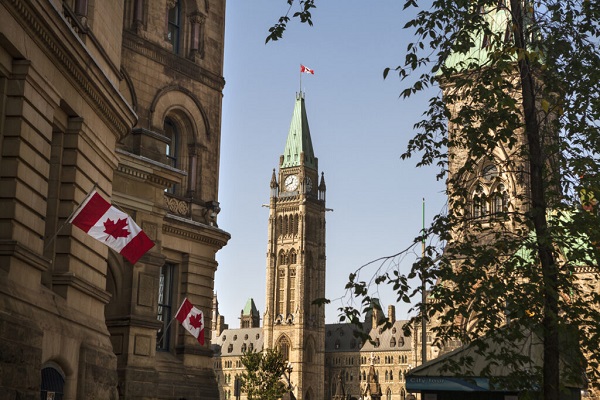
 Business2 days ago
Business2 days agoIs Government Inflation Reporting Accurate?
-
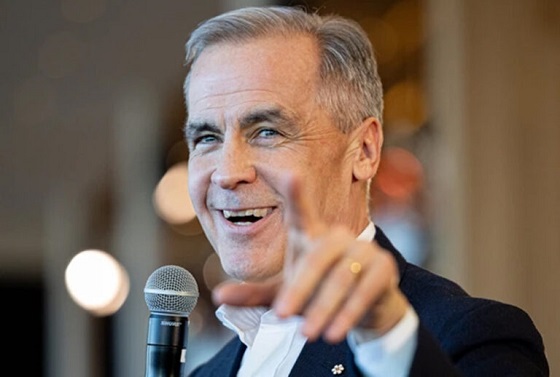
 2025 Federal Election2 days ago
2025 Federal Election2 days agoCarney’s Hidden Climate Finance Agenda
-
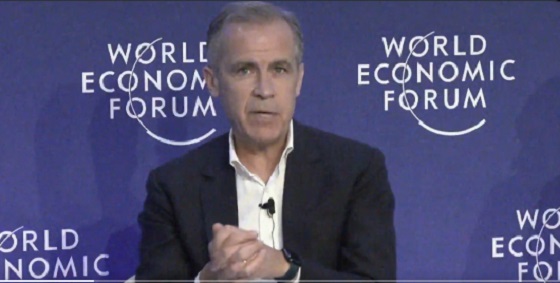
 2025 Federal Election2 days ago
2025 Federal Election2 days agoWhen it comes to pipelines, Carney’s words flow both ways
-
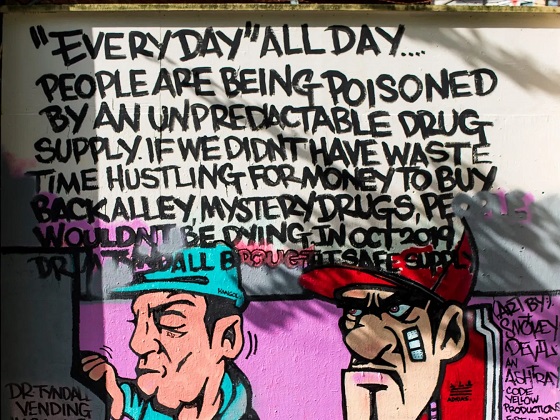
 2025 Federal Election2 days ago
2025 Federal Election2 days agoStudy links B.C.’s drug policies to more overdoses, but researchers urge caution
-

 2025 Federal Election2 days ago
2025 Federal Election2 days agoPolls say Canadians will give Trump what he wants, a Carney victory.
-
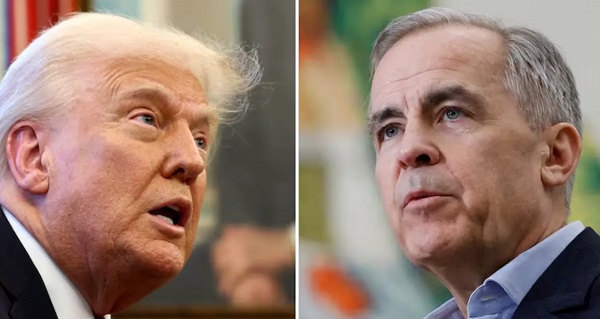
 2025 Federal Election1 day ago
2025 Federal Election1 day agoCarney Liberals pledge to follow ‘gender-based goals analysis’ in all government policy
-
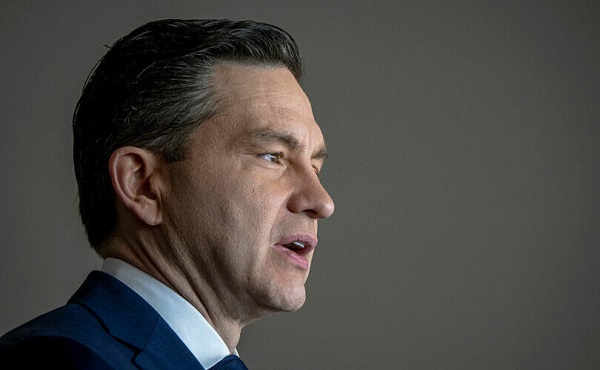
 2025 Federal Election1 day ago
2025 Federal Election1 day agoPoilievre’s Conservatives promise to repeal policy allowing male criminals in female jails
-

 2025 Federal Election1 day ago
2025 Federal Election1 day agoTrump Has Driven Canadians Crazy. This Is How Crazy.


